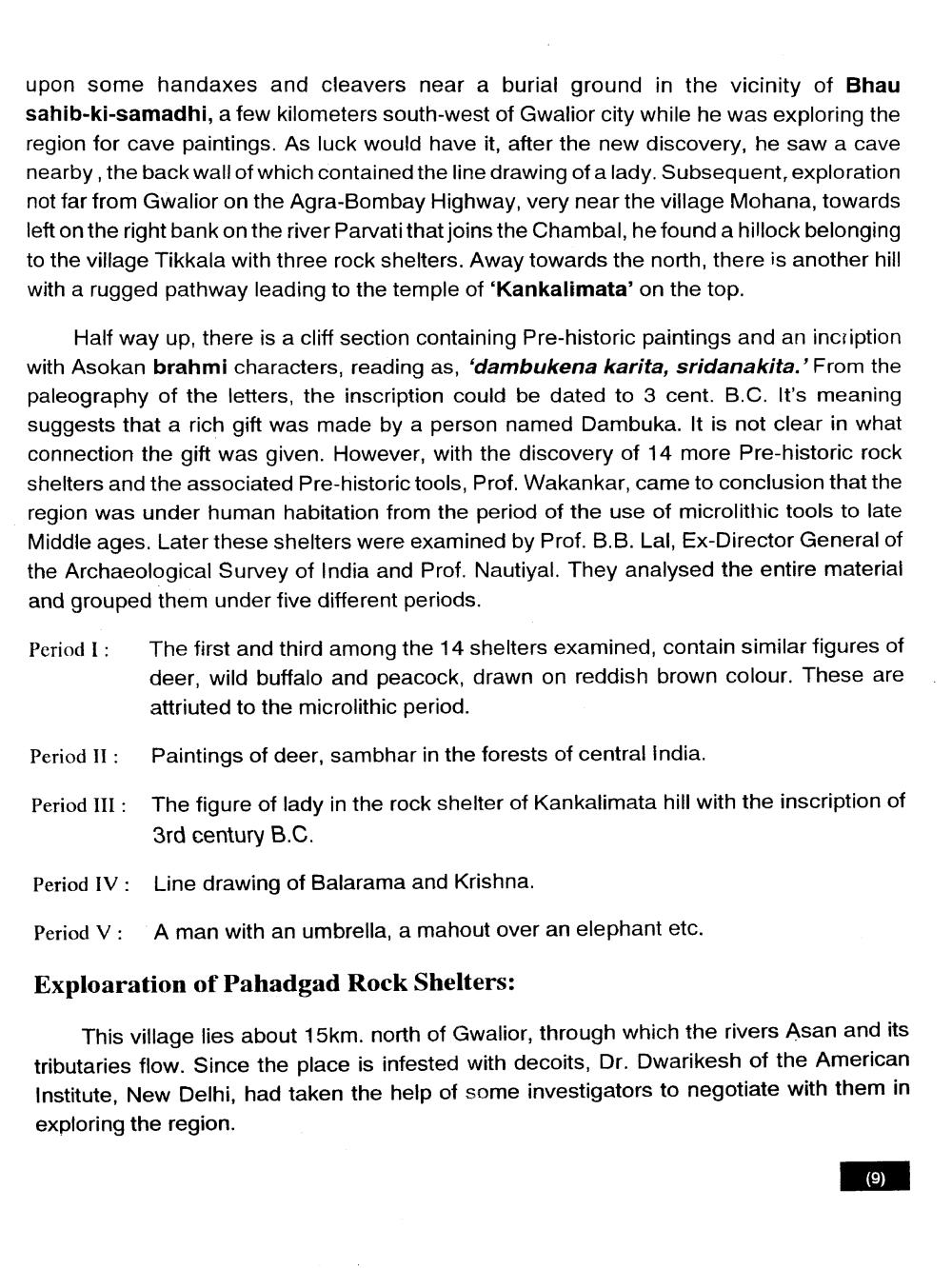________________
upon some handaxes and cleavers near a burial ground in the vicinity of Bhau sahib-ki-samadhi, a few kilometers south-west of Gwalior city while he was exploring the region for cave paintings. As luck would have it, after the new discovery, he saw a cave nearby. the back wall of which contained the line drawing of a lady. Subsequent, exploration not far from Gwalior on the Agra-Bombay Highway, very near the village Mohana, towards left on the right bank on the river Parvati that joins the Chambal, he found a hillock belonging to the village Tikkala with three rock shelters. Away towards the north, there is another hill with a rugged pathway leading to the temple of 'Kankalimata' on the top.
Half way up, there is a cliff section containing Pre-historic paintings and an incription with Asokan brahmi characters, reading as, 'dambukena karita, sridanakita.'From the paleography of the letters, the inscription could be dated to 3 cent. B.C. It's meaning suggests that a rich gift was made by a person named Dambuka. It is not clear in what connection the gift was given. However, with the discovery of 14 more Pre-historic rock shelters and the associated Pre-historic tools, Prof. Wakankar, came to conclusion that the region was under human habitation from the period of the use of microlithic tools to late Middle ages. Later these shelters were examined by Prof. B.B. Lal, Ex-Director General of the Archaeological Survey of India and Prof. Nautiyal. They analysed the entire material and grouped them under five different periods.
Period 1:
Period II:
Period III:
The first and third among the 14 shelters examined, contain similar figures of deer, wild buffalo and peacock, drawn on reddish brown colour. These are attriuted to the microlithic period.
Paintings of deer, sambhar in the forests of central India.
The figure of lady in the rock shelter of Kankalimata hill with the inscription of 3rd century B.C.
Period IV: Line drawing of Balarama and Krishna.
Period V: A man with an umbrella, a mahout over an elephant etc. Exploaration of Pahadgad Rock Shelters:
This village lies about 15km. north of Gwalior, through which the rivers Asan and its tributaries flow. Since the place is infested with decoits, Dr. Dwarikesh of the American Institute, New Delhi, had taken the help of some investigators to negotiate with them in exploring the region.
(9)




